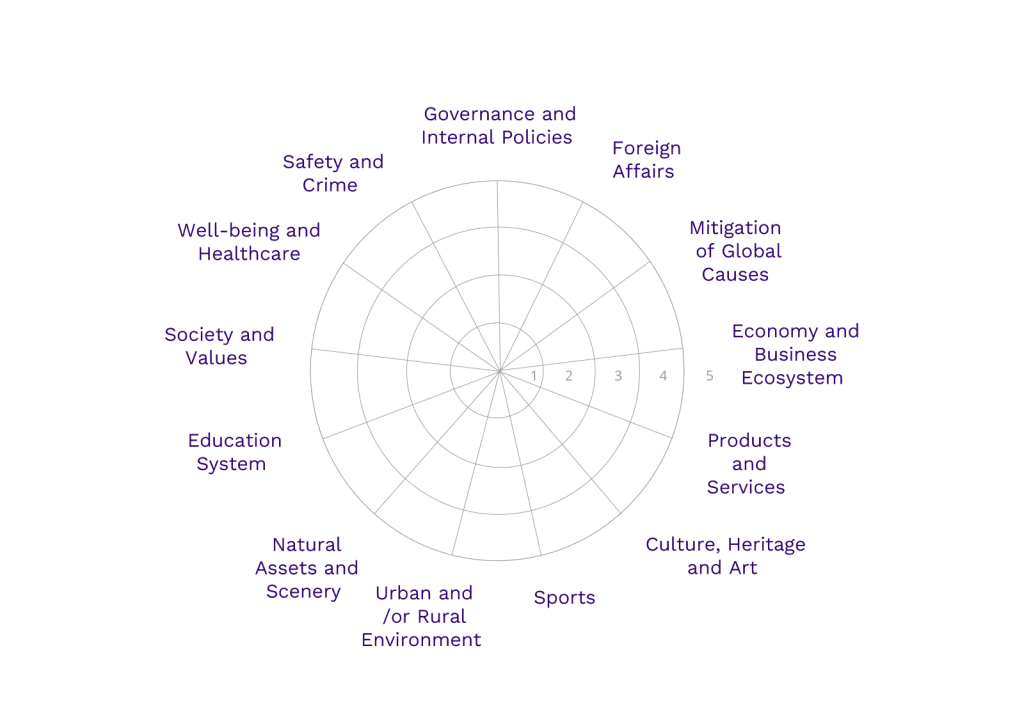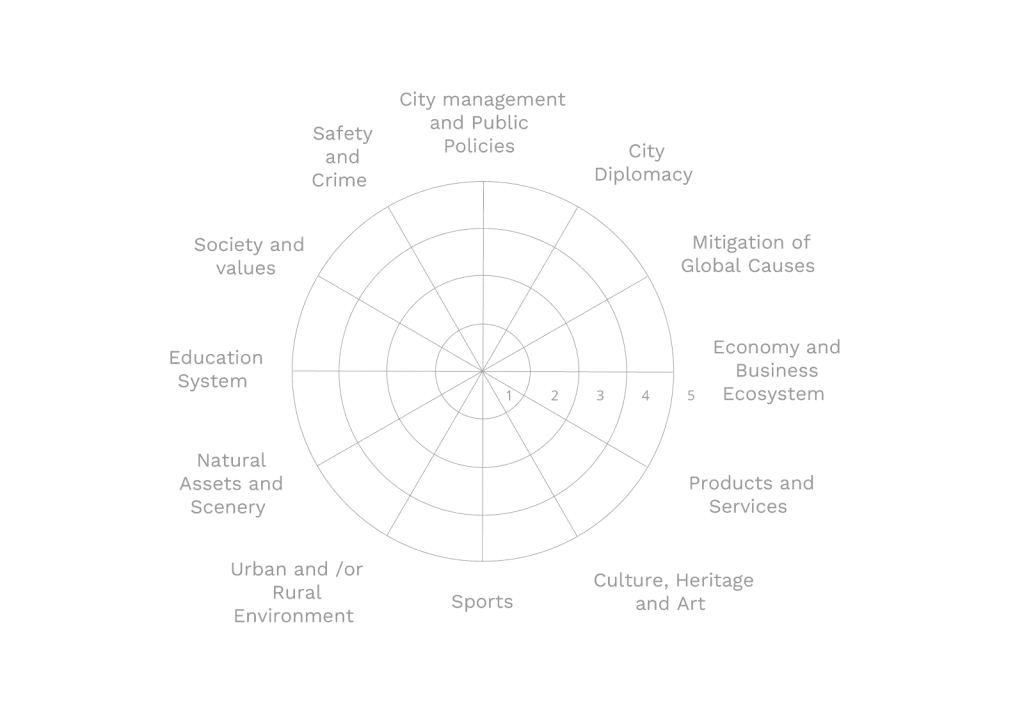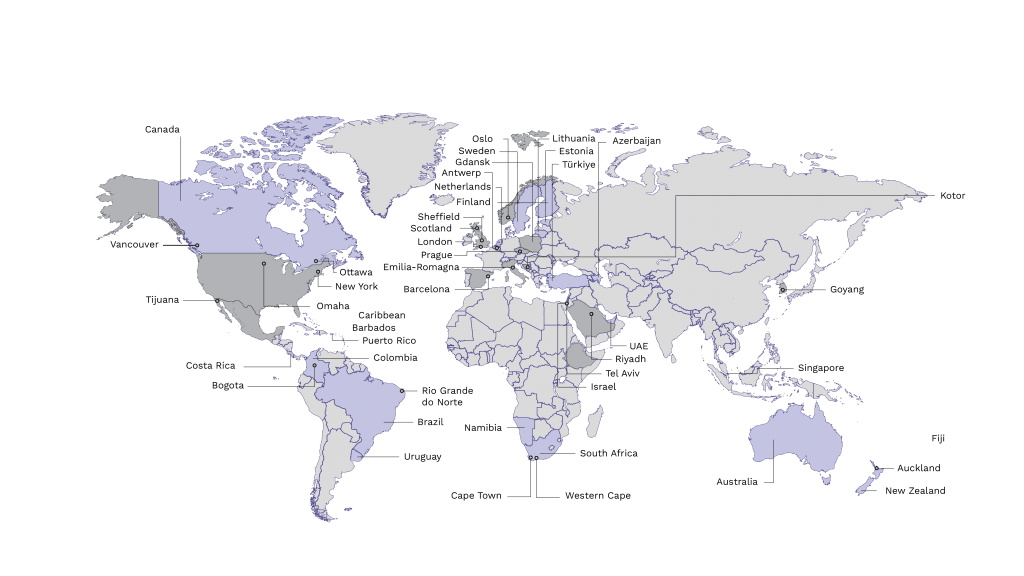Nation Branding and Place Branding is the systematic and coherent management of perceptions surrounding a country, nation, or city that is inherent in political and social domains.
While branding as an instrument has become almost a must-have within territory development and governance agendas, conceptual debates about Nation Branding and Place Branding continue to proliferate among academics and Place Brand professionals. Although there is no consensus on how to define what it is and measure its impact, we live in a world where countries and cities are being urged to find new ways to stand out and distinguish themselves in the global race for export, talent, investment, and tourism. This new reality undeniably calls for a comprehensive measurement tool to help build resilient Nation and Place Brands, and guide policies and actions.
This study aims to contribute to the dialogue between Country Branding, City Branding, Nation Branding, and Place Branding theory and practice, offering a tool for measuring branding efforts through an interdisciplinary approach. The challenge was to deconstruct the good/bad binary approach to how cities and places are perceived, define the elements that constitute these perceptions, and how they can be managed in a way to facilitate export, tourism, talent, and investment attraction.
This article focuses on defining the elements that constitute perceptions for countries and cities. The study itself was conducted by Bloom Consulting, 66 industry experts worldwide, and academic institutions including the Advisory Board for the Scientific Supervision composed by Universitat Pompeu Fabra, Universitat Pompeu Fabra, Universitat Autònoma de Barcelona, and Universitat de Salamanca. Using a Delphi method approach, diverse perspectives were gathered to define perception elements that shape countries and cities.
The resulting taxonomy models, tailored for both countries and cities, offer a comprehensive framework for evaluating and managing Place Branding initiatives. These models Bloom Consulting Nation Brand Taxonomy Model © and the Bloom Consulting City Brand Taxonomy Model © provide a proposal for a standardized approach for assessing the effectiveness of branding strategies, facilitating informed decision-making in policy formulation and development that can be adopted by Brand Managers, Practitioners and Academics. We welcome any Country Branding, Region Branding, and City Branding professional to use these models in their work.
Perception Elements that constitute one’s perception of a country and a city
As defined by Bloom Consulting, the Perception Elements, evaluated using a five-level scale, serve as a guide to later define the actions and policies required to improve the general perception of a country, region, or city.
13 Perception Elements that constitute one’s perception of a country

The findings from the initial study, which introduced the Bloom Consulting Nation Brand Taxonomy Model © as seen in Figure 1, indicated the need for potential refinements in the Perception Elements associated with City Brands, considering their unique characteristics. As a result, the initial taxonomy was revised and tailored to better suit the nuances of cities and regions. This refined the Bloom Consulting City Brand Taxonomy Model ©, emerging from the second part of the study, comprises a total of 12 Perception Elements as seen in Figure 2.
12 Perception Elements that constitute one’s perception of a city

Methodology
The first step in the process was to define a basis for a future taxonomy of perception. The Bloom Consulting research team and the academic partners conducted in-depth desk research on all available Place Branding rankings, relevant publications, practices, and other studies and case studies that aimed to measure the development of places and countries, including resources and materials from the World Economic Forum. It became clear that two key areas needed to be acknowledged and assimilated in this study:
a) Nation-building: sociological and anthropological perspectives on national discourses, policymaking, and national and international development.
b) Place (city, destination, country, region, etc.) Branding: place identity, place narratives, placemaking.
Due to the global scope of this study, the participant selection consisted of finding a wide variety of countries of origin while maintaining, a balanced distribution among the several regions in the world. Ensuring the diversity in participants’ expertise – concerning the different Perception Elements – was also an essential part of the participant selection. There were 47 experts (Place Brand managers) in a total 23 Countries, 4 Regions, and 20 Cities who participated in two rounds of the Delphi process (See Figure 3).


Any region or city is welcome to use both models.
In the Technical report, you will learn about what constitutes people’s perceptions of countries and global cities. Download the report here: What Constitutes Peoples Perceptions of Countries and Global Cities
Published on 09.11.2023.











